Visiting Dachau Concentration Camp | What to Expect
I’ve avoided visiting concentration camps in my travels until now. I had felt like I didn’t need to see them in person–I fully understood the atrocities that happened in them. If you know me, you know I am emotional at the best of times and that seeing these places in person would affect me deeply. I also felt that some travel writers/bloggers have handled these places with less than the respect they deserve and haven’t wanted to feel like I was doing the same thing. I debated writing about my experience at Dachau, but ultimately decided that we need to step up. The world is getting uglier and the idea that what happened then couldn’t, and isn’t, happening again is false and we all need to learn and speak up. Visiting Dachau Concentration Camp is an important part of both a Munich trip and history itself.
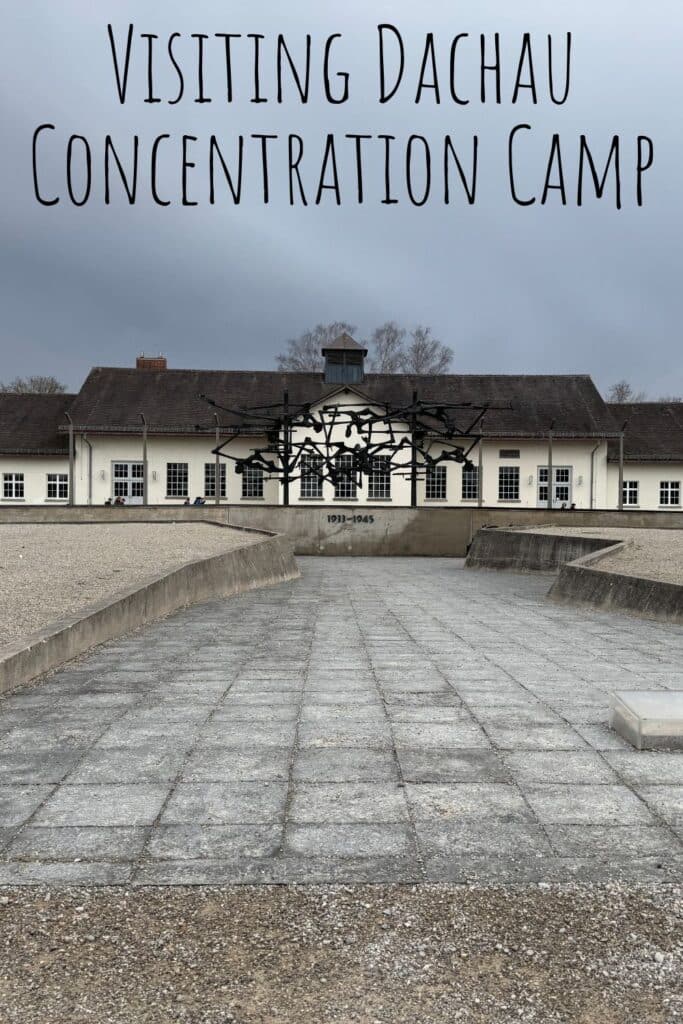
Located about 16 km outside of Munich, Germany, the Dachau Concentration Camp serves as a somber reminder of some of the darkest chapters in world history. Dachau, opened in 1933 to house political prisoners during the Nazi regime, would become the design upon which future concentration camps were built. If you’re planning on visiting Dachau Concentration Camp to learn more about this dark historical era, here’s what you need to know.
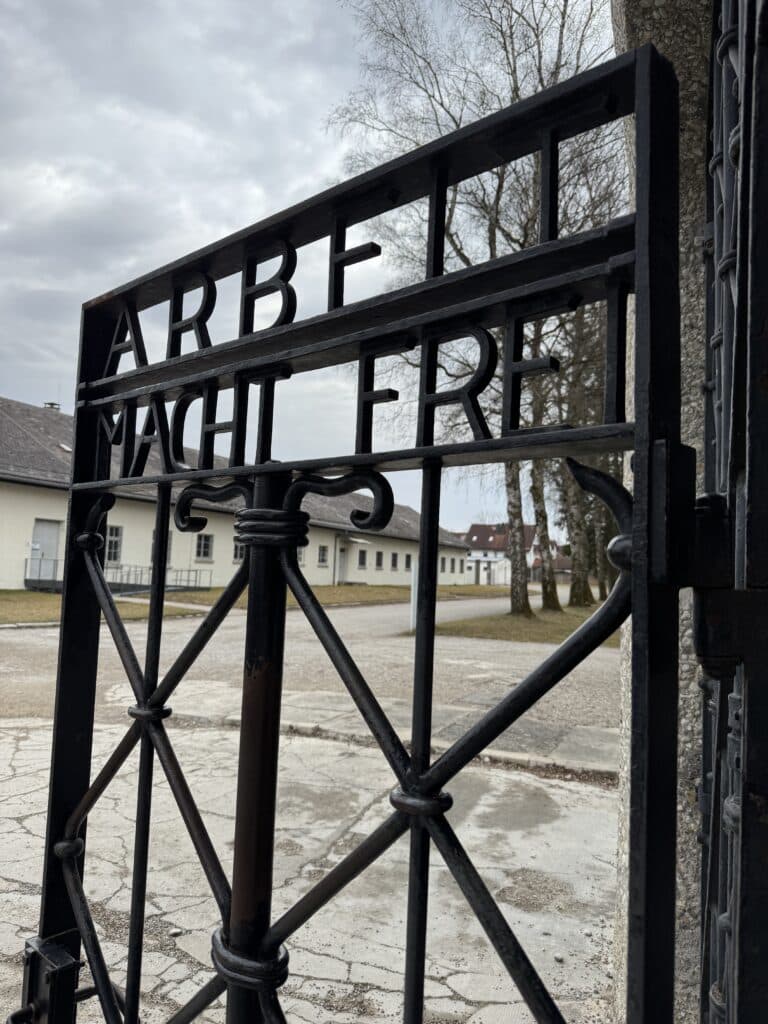
By the time allied forces liberated the camp in 1945, over 30,000 people were imprisoned at Dachau; a vast difference from the maximum capacity of 6,000 the site was meant to house. It is estimated that just over 41,000 people died at Dachau between 1933 and 1945, and in 1965, it was transformed into a memorial site honoring the memory of the victims and the horrific events that took place there.
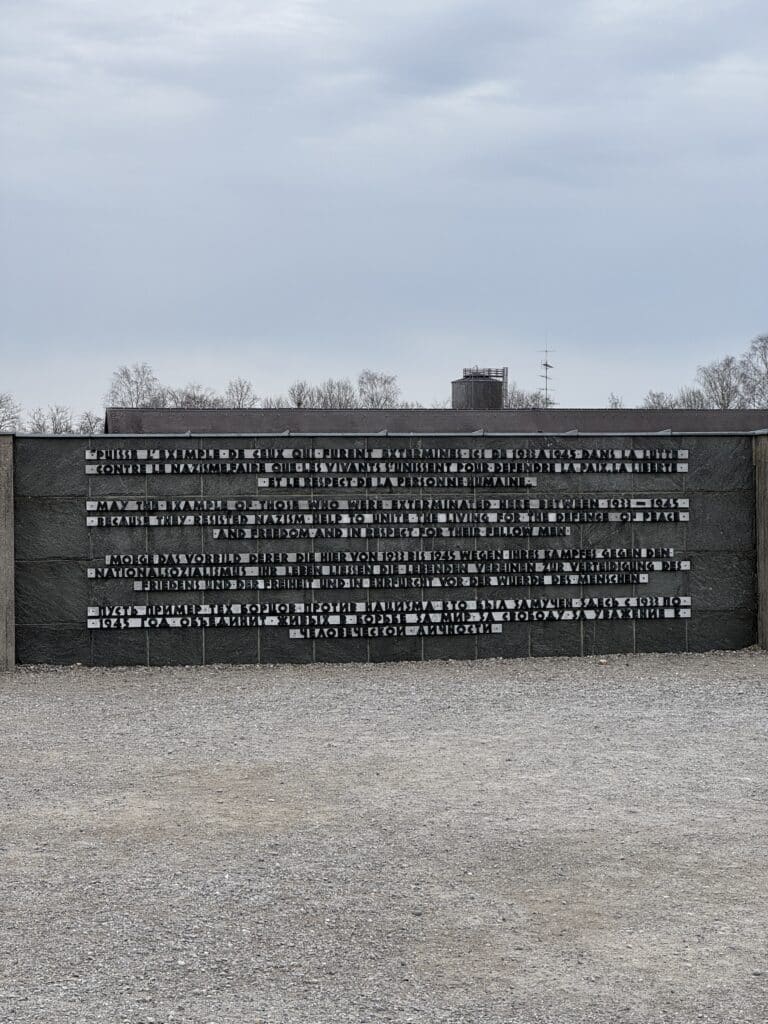
What is the Dachau Concentration Camp?
Those held at Dachau included a mix of political opponents of the Nazi regime as well as gay men, Jehovah’s Witnesses and Jews. Considered the first concentration camp, after Kristallnacht (Night of the Broken Glass), approximately 11,000 Jewish men were arrested and brought to Dachau. The number of Jews imprisoned at Dachau varied over the years, but between 1933 and 1945, over 200,000 people were imprisoned here, subjected to starvation, disease, forced labor, medical experiments, and mass execution.
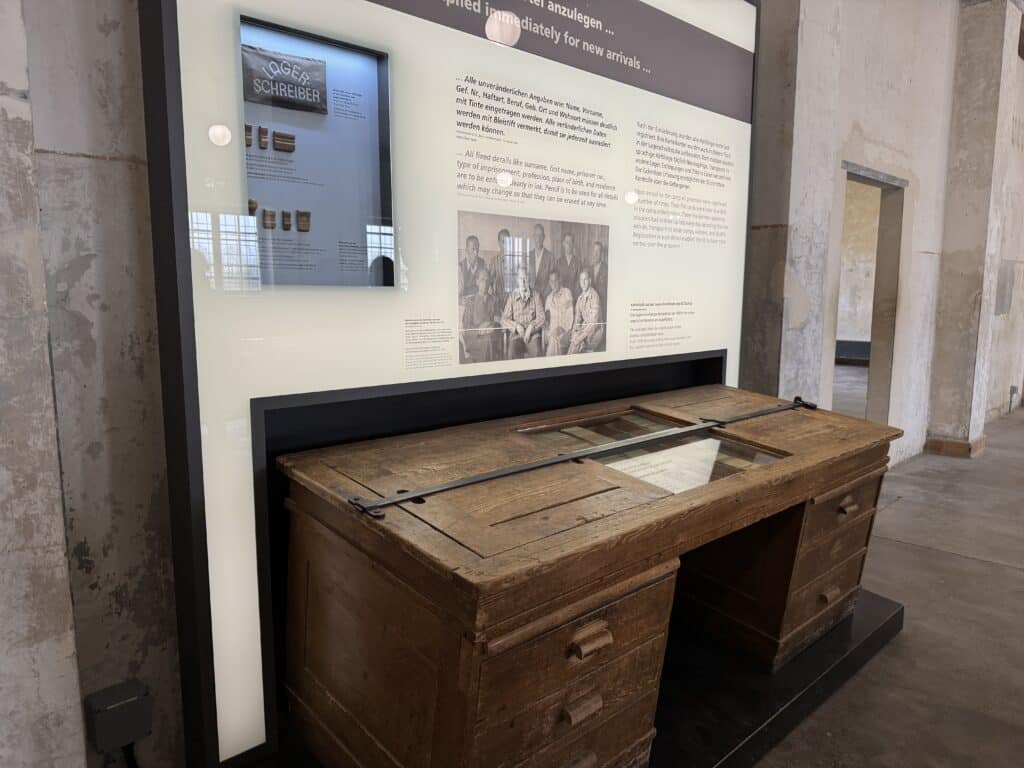
It is estimated that 800,00 people visit the memorial site of Dachau each year to honor the victims and educate future generations. The site is a reminder of the atrocities committed during the Holocaust and calls visitors to ponder the consequences of authoritarianism and hate.
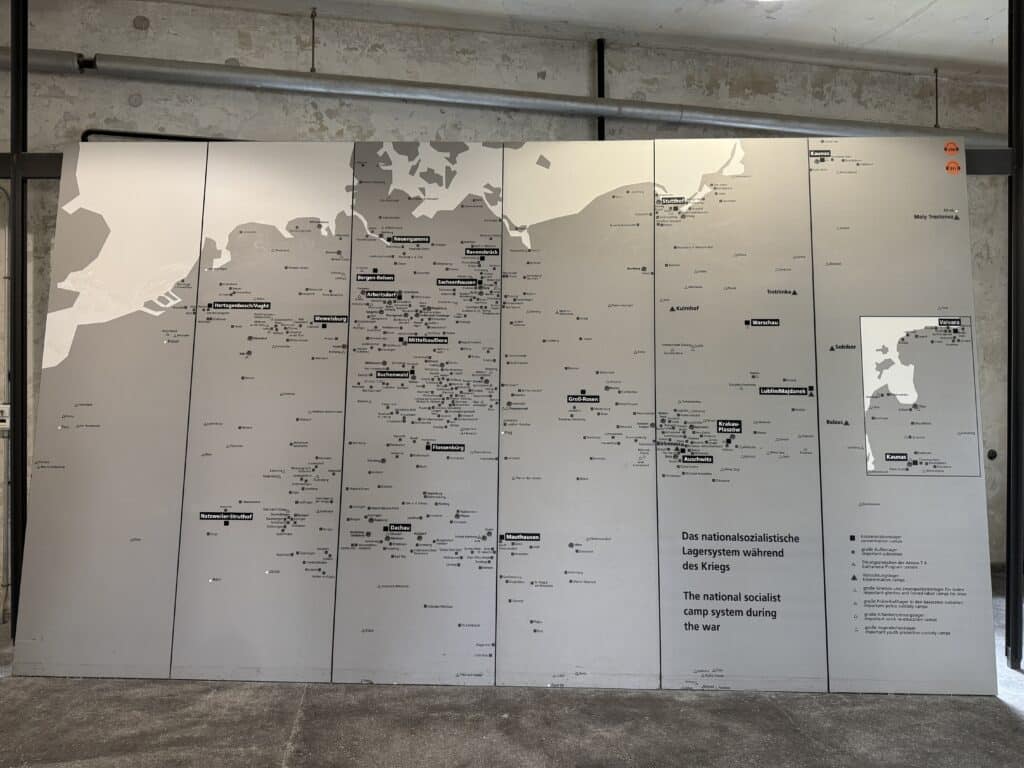
Exhibits and Memorials at Dachau
For those visiting Dachau, there are several notable exhibits to explore at the site. The Death March Monument is one of 22 monuments honoring the memory of prisoners in 1945 during the final months of the war. Another exhibit pays tribute to Czech artist Vojtech Preissig, who was brought to Dachau in 1944 and died from disease six months later. Fellow prisoners created a plaster cast of his face and were able to smuggle it to his family as a way to preserve his memory. The cast is currently displayed at Dachau.
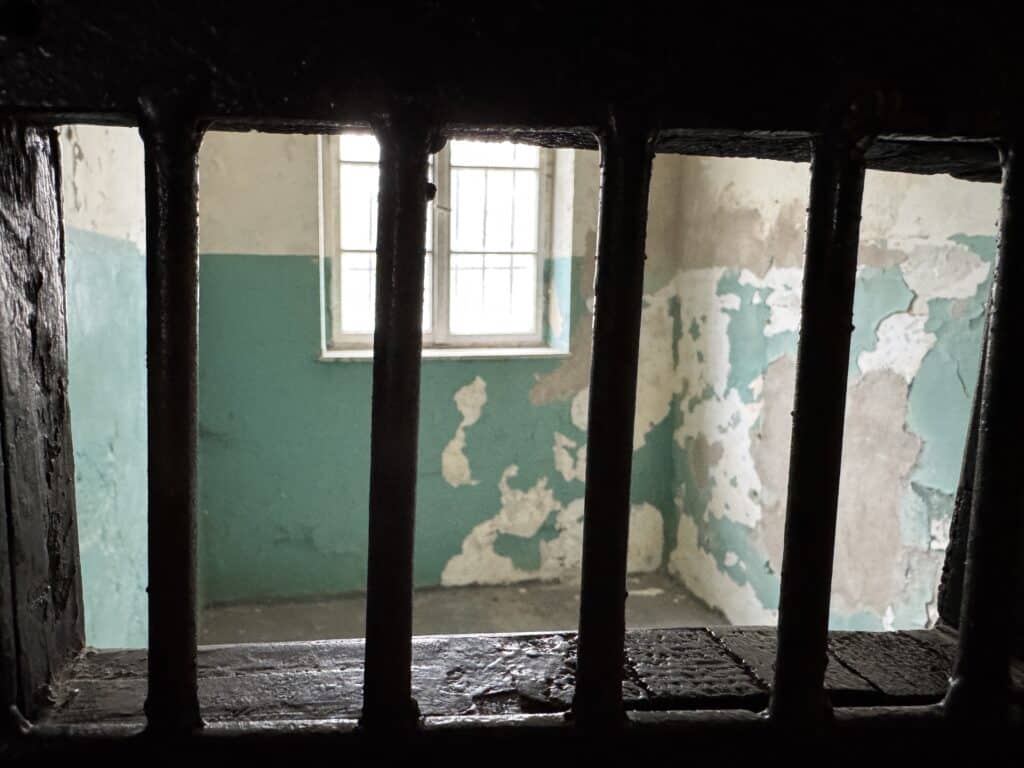
Visitors will also be able to explore the prisoners’ reconstructed barracks and bunkers and understand the harsh, overcrowded conditions in which they lived. Additional displays like prisoner uniforms and the triangular identification badges indicated various reasons prisoners were held within the camp, providing a glimpse into the dehumanizing nature of the camps.
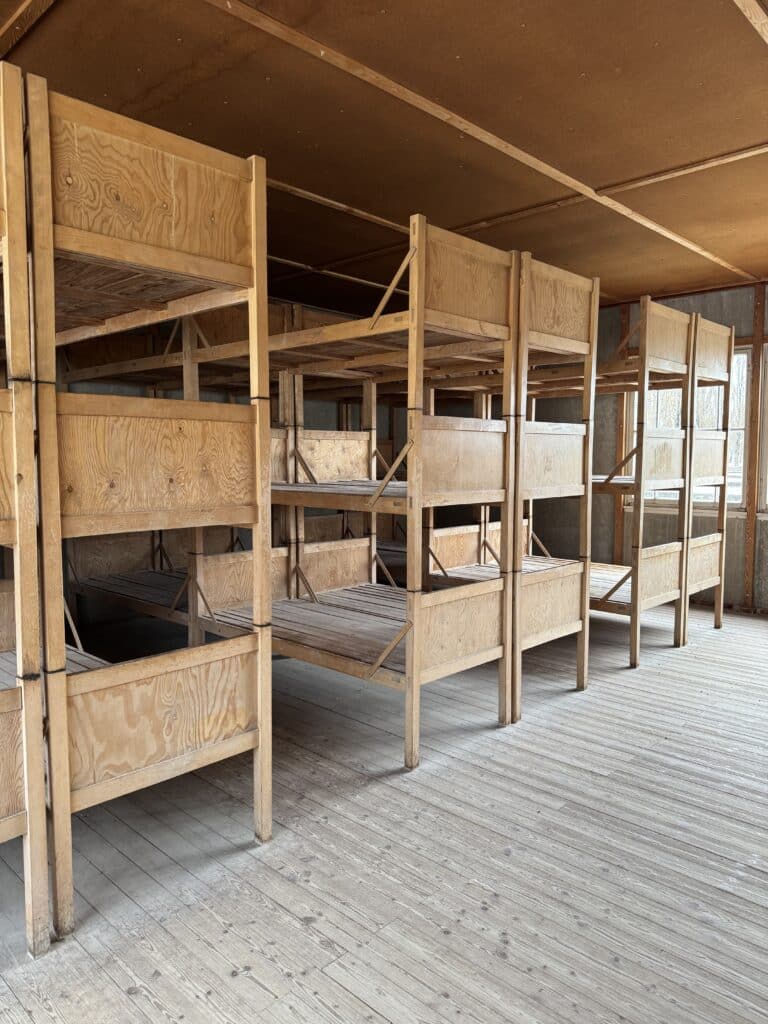
The crematorium, which was built in 1940 and in use until 1943, serves as a stark reminder of the horrific history of the time, while both the Grave of the Many Thousand Unknown and the Monument of the Unknown Prisoner honor those who died and those who resisted.
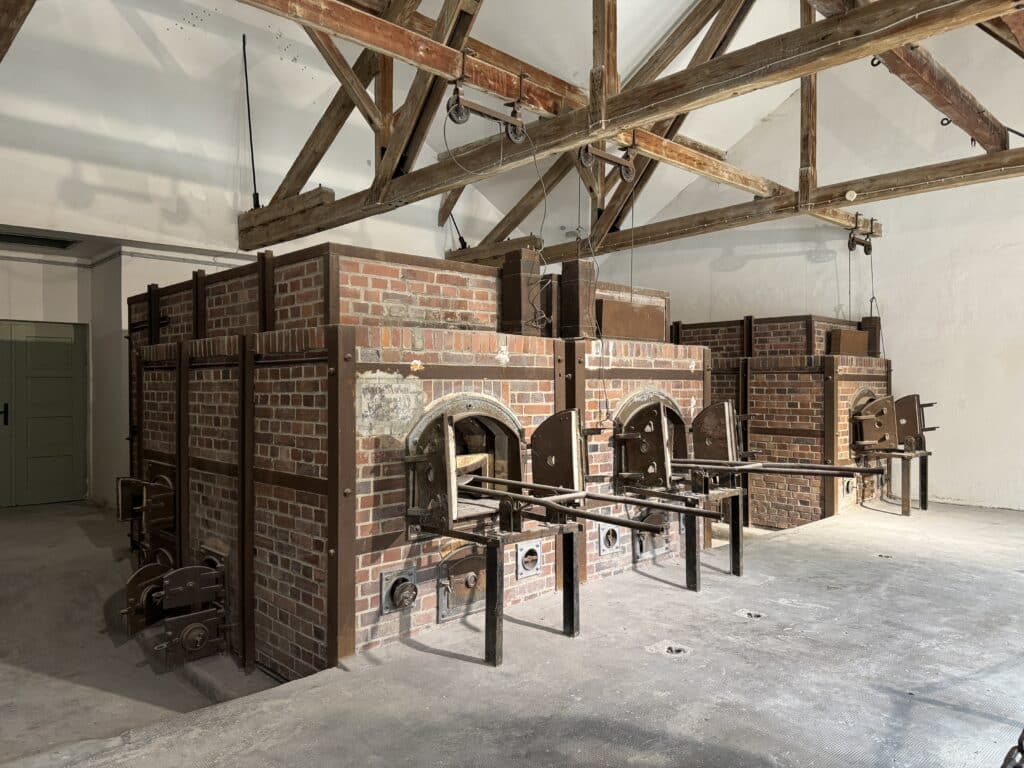
What to Know When Planning a Visit to Dachau
The site is open daily from 9 a.m. to 5 p.m. with the exception of Christmas Eve. Admission and parking are free and corresponding educational materials can be found online in both English and German. Visitors can also take advantage of the memorial library and archive center that are open by appointment to the general public from Tuesday through Friday. Educational programs are also available for those over the age of 13.
Exhibits take visitors through the rise of the Nazi regime, explore the Holocaust and cover how Dachau evolved into a forced labor camp and ultimately a site of mass wartime murder. Additional exhibits explore liberation and what occurred on site, postwar. Visiting Dachau is not an easy one to endure, but it is important and necessary.
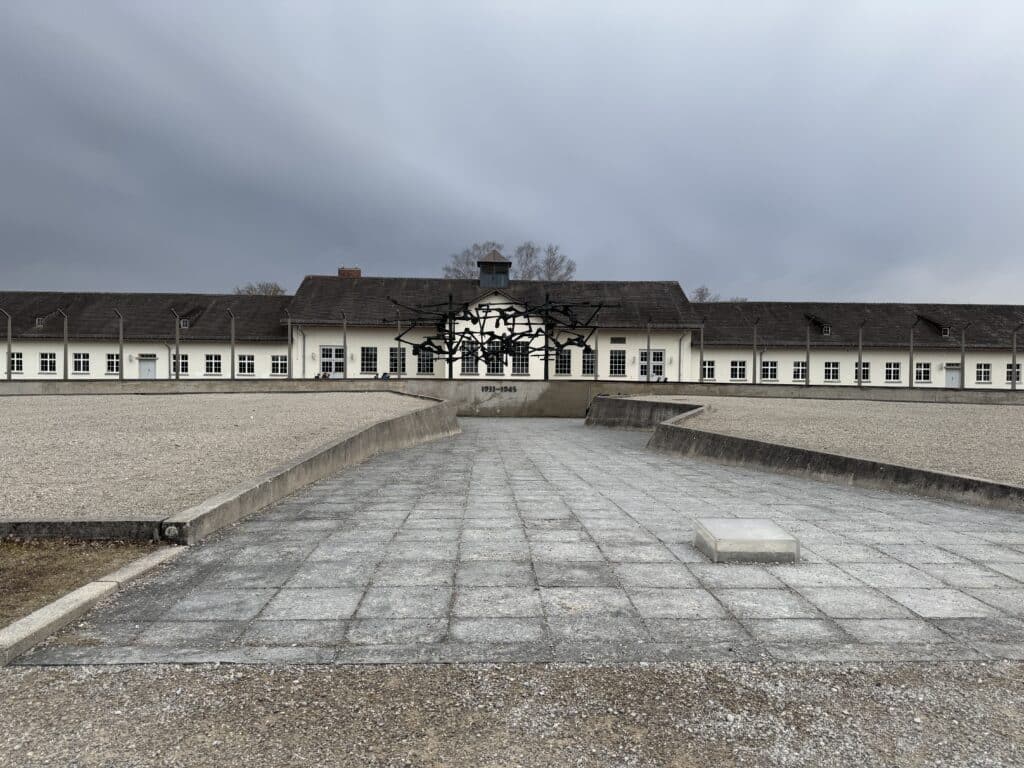
Accommodations and Dining Near Dachau
There’s no question that visiting the Dachau Concentration Camp is a moving experience, you’ll likely want to have some down time after your time here, thankfully the Dachau area is home to quiet spaces nearby to reflect and rest. If you prefer local dishes, consider Gasthaus Drei Rosen or for a light breakfast of coffee and pastries, Cafe zum Schloss, each just under ten minutes away.
As far as accommodations, Hotel Central Dachau Garni is a popular choice, as is nearby Hotel Fischer, where a traditional German breakfast is included each morning of your stay. Or if you prefer, Munich is 25 minutes away via train and offers a variety of lodging and dining options.
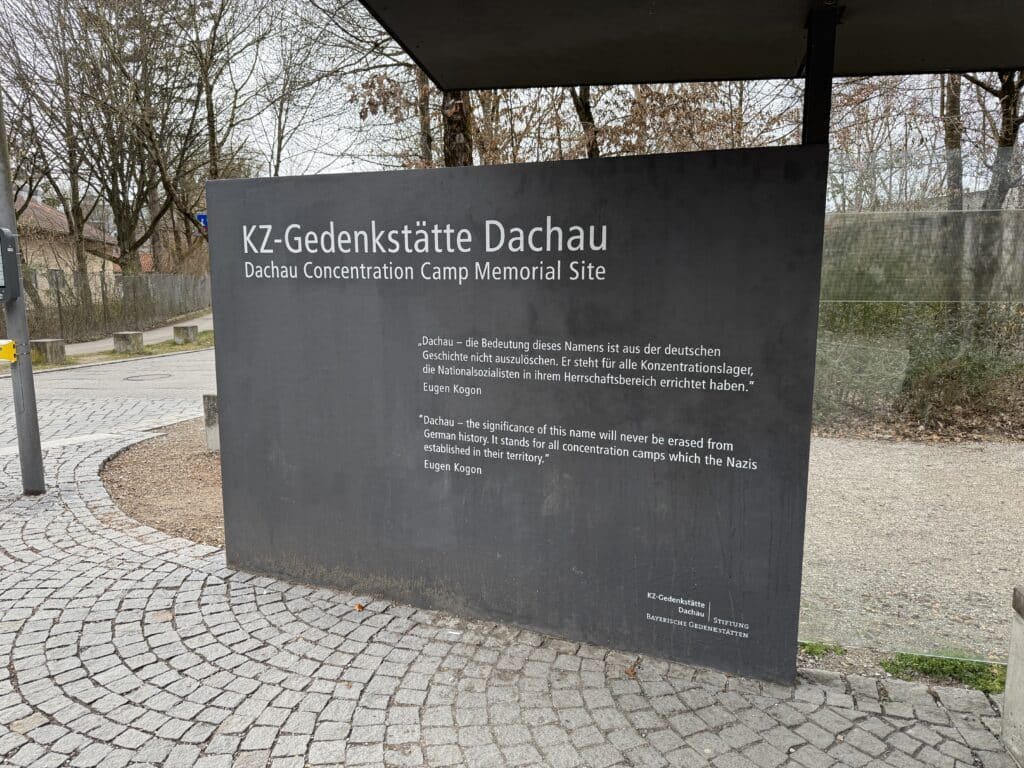
Visiting Dachau is a solemn experience and a place of remembrance, where the memories of those who suffered are honored and preserved. Walking the grounds is a time of quiet reflection and a reminder to never forget the past.







